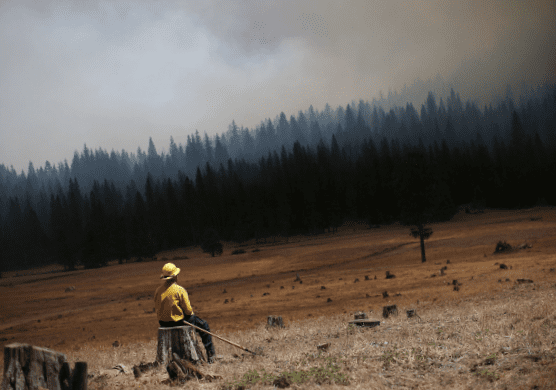After a fire, it can take a different time for a forest to recover. In the north, it takes much longer than in the south. However, the renewal of the living above-ground cover, which includes grasses, shrubs and mosses, is quite fast and can start as early as the following year after the fire.
For lichens, this process is slower and takes up to 60 years on average. It takes about 30-40 years for mosses, depending on natural conditions.
After the fire through species change, the regeneration of coniferous forests takes much longer than their direct regeneration. Conifers live long; hardwoods are less durable but grow faster.

Determining the exact duration of forest regeneration is problematic because it depends on specific growing conditions, the severity and types of damage, type (downstream, upstream), and form of fire (runaway or persistent).
Even weak but prolonged burning can cause significant damage and a long regeneration time. Another factor that affects recovery is the time of year when the fire occurred. It is one thing if a forest burns in the fall, when the leaves have already fallen and the trees have prepared for wintering, and another thing in the spring, when they have just “woken up” and gained colour. In the second case, the consequences will be more severe.
What must be extinguished
The consequences of fires can be very severe, so fires must be fought. But it is difficult to do so because the forest service is underfunded and understaffed.
Years of practice have shown that simply increasing financial and material investments in forest fire protection does not lead to adequate fire reduction. Fire in the forest has its ecological role and cannot be completely excluded from forest life. To solve the problem of fires, it is necessary to create a fire management system.
In the new economic situation with a lack of funding and a large variety of natural and economic conditions, it is necessary to move at the state level from the concept of firefighting, which provides compulsory control of all fires, to the concept of fire management. It is based on the principles of priority-selective priority of fire suppression and involves differentiation of levels of forest protection.
The institutes on fires have developed the system of forecasting fire behaviour, which is the basis of the concept of fire management. It includes information based on the classification of vegetative combustible materials and mapping methods, a model of the speed of fire spread, methodology of forecasting natural fires’ behaviour, and their intensity and consequences.
Termination of extinguishing works is allowed when there is no threat to populated areas or economic objects when the predicted costs of extinguishing exceed the predicted damage from the fire. The Commission makes such a decision on the Prevention and Elimination of Emergency Situations and Fire Safety of the executive authority of Canada. First of all, this applies to northern territories and does not apply to suburban areas, where fires must be extinguished.
